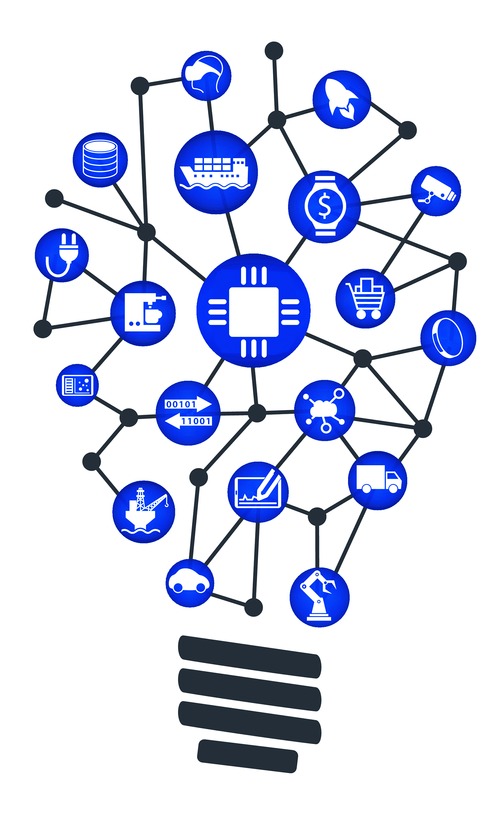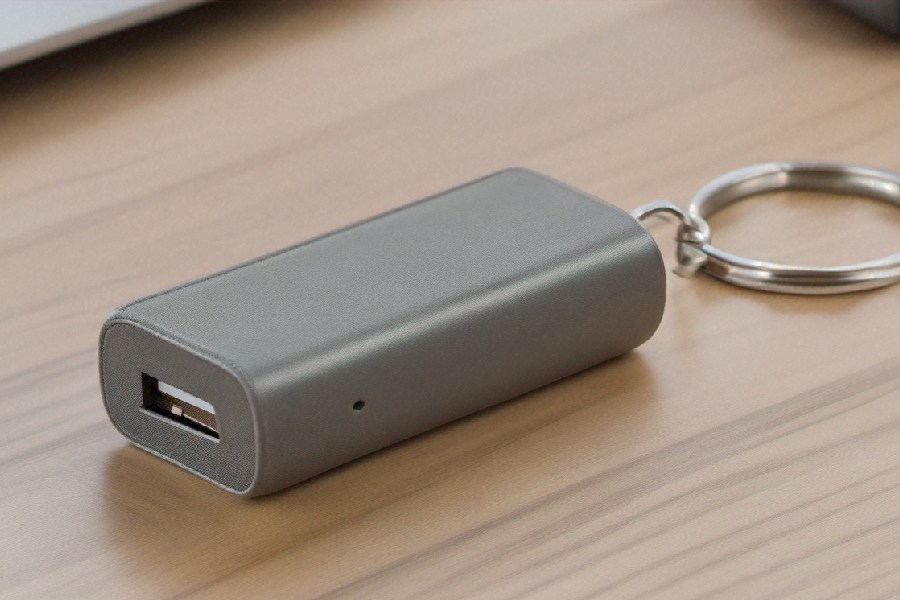

Are you one of those people who frequently misplace their glasses, keys or wallet? Well here's good news for you. If you just put a smart chip on your belonging and tag it to your smartphone, you will be able to keep track of it. Or, if you are a sloppy driver who pays no attention to the speed limit, keeps the headlights on, forgets to fill the tank and fails to get the car serviced on time, help is at hand. Just plug a smart device into your car and it will send you the necessary reminders on your phone.
Broadband connectivity in India has improved by leaps and bounds and, with the ubiquitous presence of smartphones, we now have "made in India" gadgets that can talk to each other seamlessly - such as the car and your phone, or even your housekeys and your phone. All you need is a smart chip. The use of such "smart devices" underlines a phenomenon that is slowly taking shape in the country - the Internet of Things (IoT) - in which a flurry of gadgets can connect to the web and talk to each other, making normal machines more "intelligent".
This technology can stretch to all sorts of appliances in the household, factory, hospital and even the paddy field. According to a projection by technology company Deloitte, by 2020 there will be 1.9 billion IoT units in the country. The market value of the sector will hit $9 billion.
Unfortunately, the backbone of these smart devices - the multifunctional nanochip - is usually of foreign make. The specialised integrated circuits (ICs) creating the IoT, the sensors that "see" situations instantaneously (for instance, your car's tank needs to be filled) to make a "smart decision" (raise an alarm) using the computer or phone and respond with the appliances (maintain an optimal fuel level) are mostly designed and manufactured in the US, Europe, Korea, Japan, Taiwan and even China.
The sensors are normally "analog" as they report a specific level of the fuel in your car while this signal is converted into simplified "digital" information in a computer or a smartphone. Thus, smart devices require versatile ICs capable of processing both analog and digital information - the mixed signal. To enable mixed signals, one needs to combine two transistor technologies in one chip - the high-speed and high-power bipolar junction transistor (BJT), and low speed and low power complementary metal oxide semiconductor (CMOS). The combination, known as BiCMOS chips, produce a versatile technology platform that enable IoT devices.
The French-Italian ST Microelectronics and the US-based Texas Instruments are among the leading companies that specifically develop BiCMOS chips. These versatile chips excite the closet electronics enthusiasts who like to control gadgets through their smart-phones. Incidentally, such chips are key for spacecrafts, rockets and defence projects too.
With the growing demand for electronic devices - both in the strategic and consumer domains - the country's import bills for sophisticated chips (currently around $10 billion) could surpass its oil bill ($72 billion) unless indigenous chip manufacturing is developed on a war footing.
A team of engineers from the Indian Institute of Technology Bombay has taken the first small step towards it. Led by Udayan Ganguly, associate professor, electrical engineering, the team has come up with a homegrown BiCMOS chip. "We kick-started the project in May 2016 when Piyush Bhatt, a research engineer, developed the process design for the fabrication of the nanochip and demonstrated its technical feasibility through computer simulation," says Ganguly. The design was fine-tuned and passed to a team led by H.S. Jatana at the Chandigarh-based Semiconductor Complex Ltd (SCL) - owned by the Indian Space Research Organisation - to fabricate the chip. SCL is the largest chip-fabricating outfit in India.
"On June 2017, the fabricated devices showed first signs of life! The device amplified the input signal a 100 times at output-which is very competitive," explains Ganguly. "Such successful joint technology development proves skill and capabilities of Indian agencies. This is a first step towards making technology that can compete in the market with the best products," says Devang Khakhar, director of IIT Bombay.
The Indian government is encouraging the setting up of large-scale chip factories - known as mega-fabs - to produce such powerful chips with indigenous technology. The next logical step will be to scale up production at SCL - through corporate partnerships and mega-fabs, if required - to meet the growing commercial demand of the versatile chip in the country.
This chip will soon be off the block.
THE MASTER CHIP
• Until recently, the more than $300 billion semiconductor industry developed around the standardised hardware of PCs and smartphones - boxes that stay indoors. But the Internet of Things (IoT) will need a huge diversity and shift from this norm
• IoT connected devices and applications would require chips with ultra-small form, low power consumption and wireless connectivity options
• The new generation of chips will run billions of sensor devices in a wide variety of places - factories, fields and even underwater. The smart sensor nodes have to withstand variance of temperature and natural forces. They will also require powerful radio components to send data over long distances
• With the increased adoption of IoT sensor products - such as smart watches, fitness bands and self-driven cars - the need is for increased functionality on a single form. In other words, one needs to pack more function on a tiny chip











